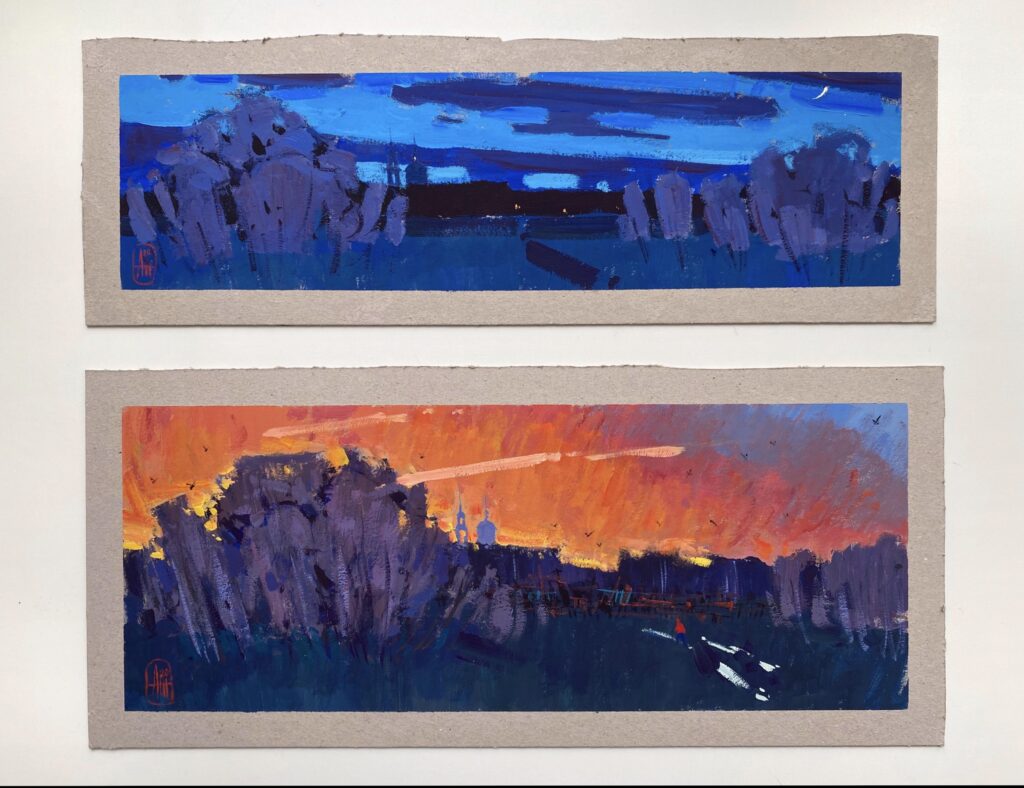Alexandra Trofimova’s works impress me personally with the combination of simplicity of chosen subjects and spectacular and bright technics which convey moods.
In her landscapes, there is always something familiar, something you are passing by everyday, paying no attention to: a red bricked five-storied house, a blue fence around a playground, handmade bird feeders, a yard overgrown with tall grass. All these things are transforming into a real story on the canvas.
Hello, my name is Alexandra and I love bringing onto any surface everything around me. I have been keen on painting from my childhood, but I cannot say that I was eager to become a painter in the future. My mum tried to send me to an art school in different years, but I resisted and there was no interest to this in me. I went to an art school only when I felt that willing and realized that I wanted to get relevant education. Frankly speaking there was some hesitation even then, once I was looking forward to becoming an illustrator, later – an architect, but the lack of good knowledge of science took away that dream. Also I was interested in handmade craft and pottery has been still attracting me but actually only in dreams and thoughts. The idea of becoming a painter started to fascinate me just when I was studying for this being a sophomore. And it has been still capturing me, and I enjoy it.
Thanks to my University I began to love open-air painting. And there was no other way for me surrounded by the likeminded people who were working side by side with me every day and who shared my believes. And we were also traveling all the time, we were transferring our impressions onto the canvases taking a part of any moment as a keepsake!
Graduating from the University I found some interest in trying to use different materials. I had got tired of oil painting by that moment, but I still wanted to continue working with colour. Therefore, I came to gouache and tempera. I was wondering why these two similar materials valued and considered in different ways. As a result, I understood that each of them has some advantages for me and I view both as a coherent whole. And working with them is more pleasant than with anything else. Maybe in future the situation will change, let’s wait and see.
On the internet we can find mostly your open-air works. Do you see yourself exactly as a landscape artist or do you not show a part of your works?
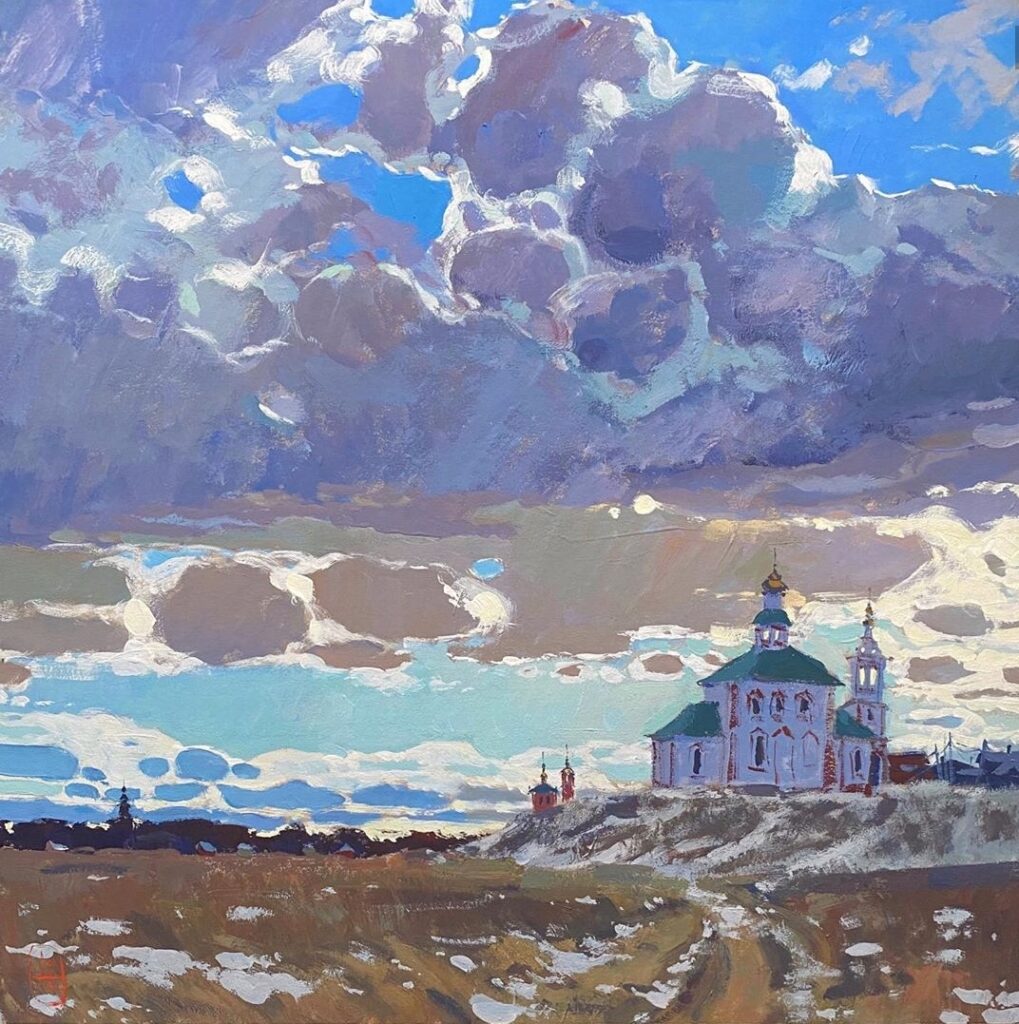
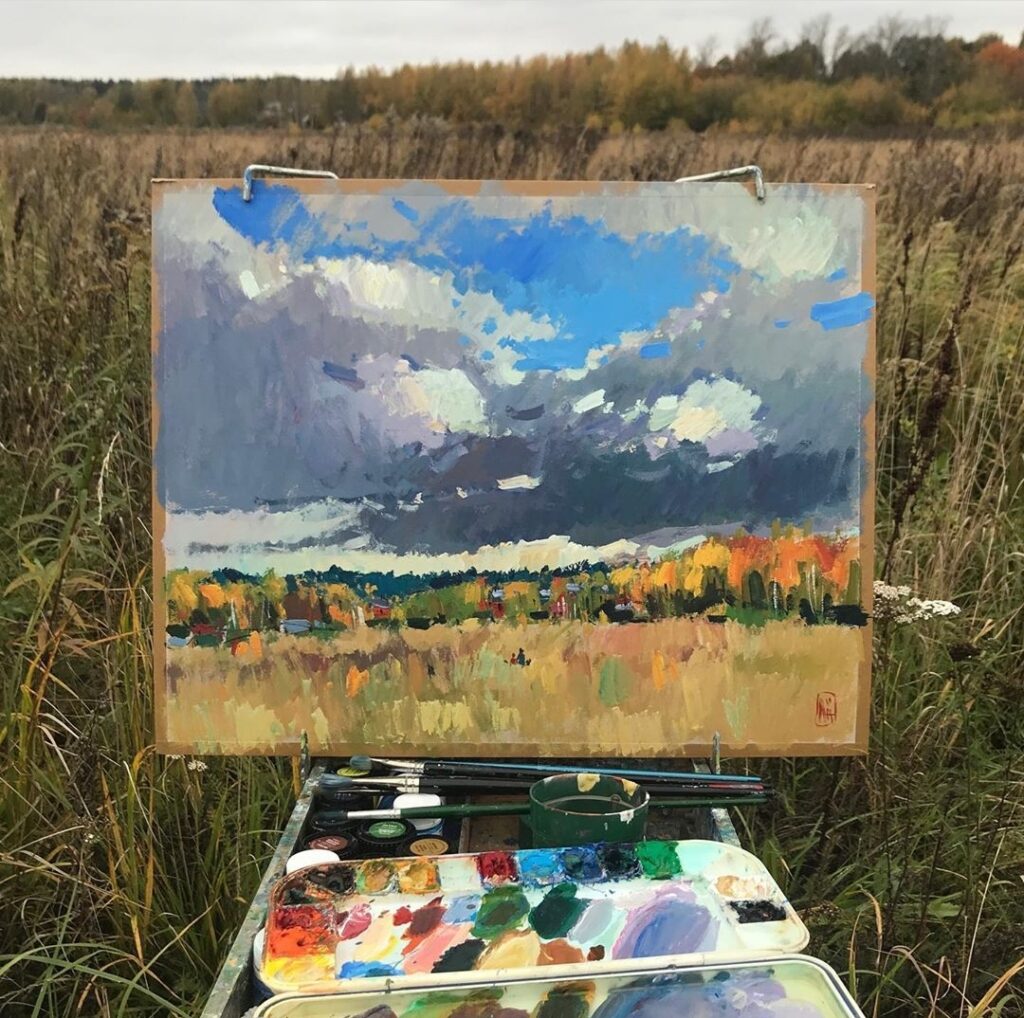
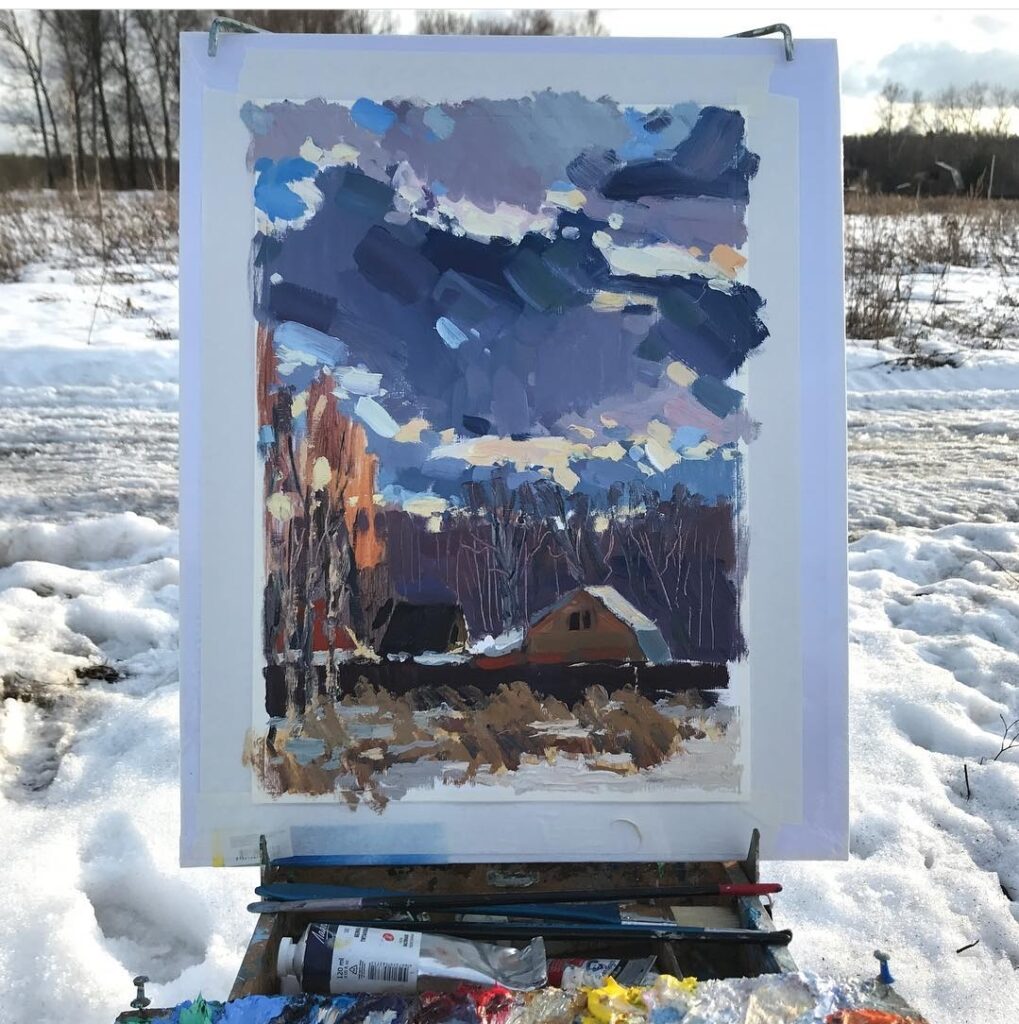
I like working with nature, other genres are interesting for me too. But all the latter part of my work goes in the trash, since I cannot see what I want to get in the outcome. But it does not mean that one day I will not come to a genre multifigured composition, that this type of art does not attract me. I admire people who can do this, but it is very unlikely that I will be able to create something of this kind. At this moment, the landscape gets all my attention of a creator, I do not know what is going to be. Maybe everything will change, and I will start to think and speak, and act another way. At least I have some themes that I am going to develop and to make several series. If everything works out, in the future I will show them and tell you about them. I do not want to get ahead of myself, as now all this is perfect just in my thoughts not on paper.
What is the secret of successful open-air?
I think there is no correct formula. You can wander for about four kilometres bearing your sketch box with canvases, that leaning you closer and closer to the ground with every step of yours, hating yourself for this idea of hiking, keeping in mind the necessity of going back, but in the end everything is getting unimportant when you touch the paints. Even the result, the outcome is getting less important. The matter is that if you really like to work open-air nothing can disturb you – neither bad mood nor realizing that you have left your palette or paintbrushes at home.
Were there any funny stories at open-air painting? Did you get acquainted with anybody, were there any occurrences or even anything extremal?
Certainly, there were, it goes without saying. Once I left my case with cardboard at home, remembered of it on my halfway, had to go back. And having no palette, no thinner or no paintbrushes you can think of something, but a lack of cardboards can cause some problems. I happened to forget to take tubes of exact paints. There were some small talks with “art connoisseurs”, whose son “can do the same easily” or saying, “why so expensive it’s just a piece of cake!” But sometimes it occurs to be pleasant and interesting conversations.
One time in the mountains I realized that I was becoming unbalanced with all my stuff on my back and I had to brake with my knee not to roll off the downhill. I had never seen such a huge bruise on me. There was also a nasty case. Our teacher at the Uni often had warned us about going to open-air painting alone, since different dangerous situations can happen, especially to young girls. But fortunately, I dodged a bullet and it was my first and last experience.
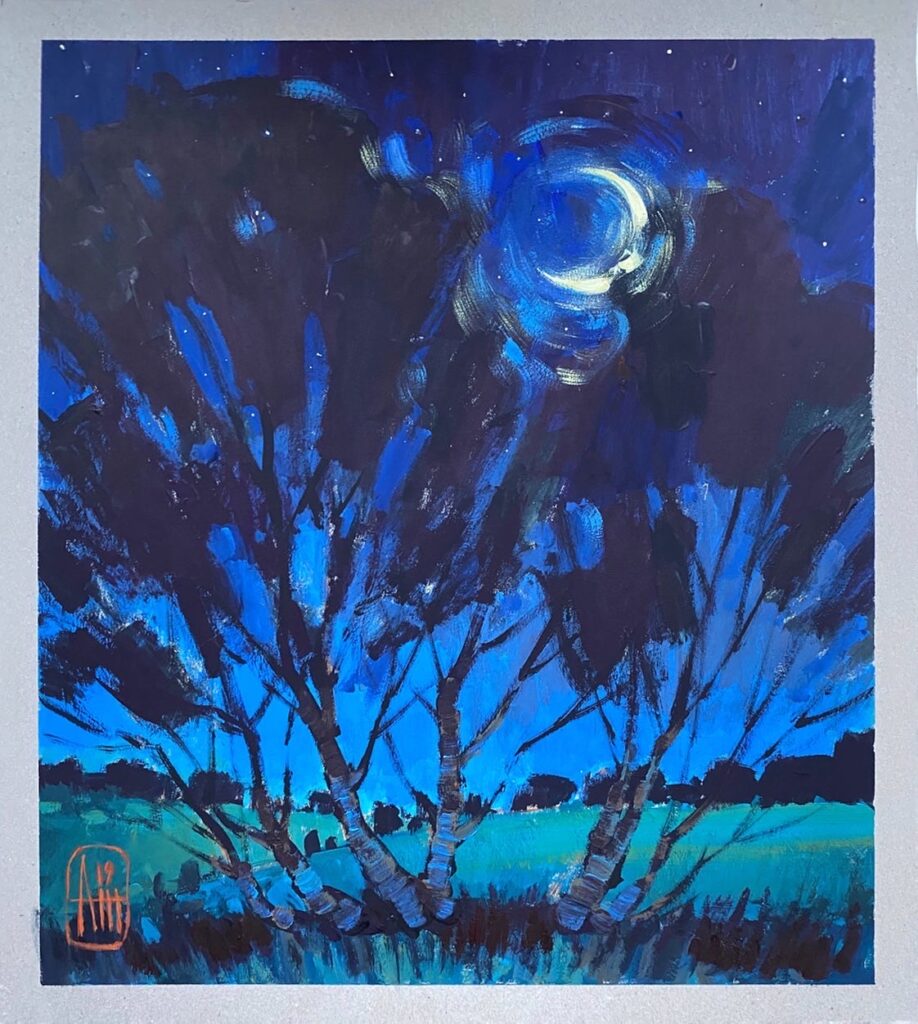
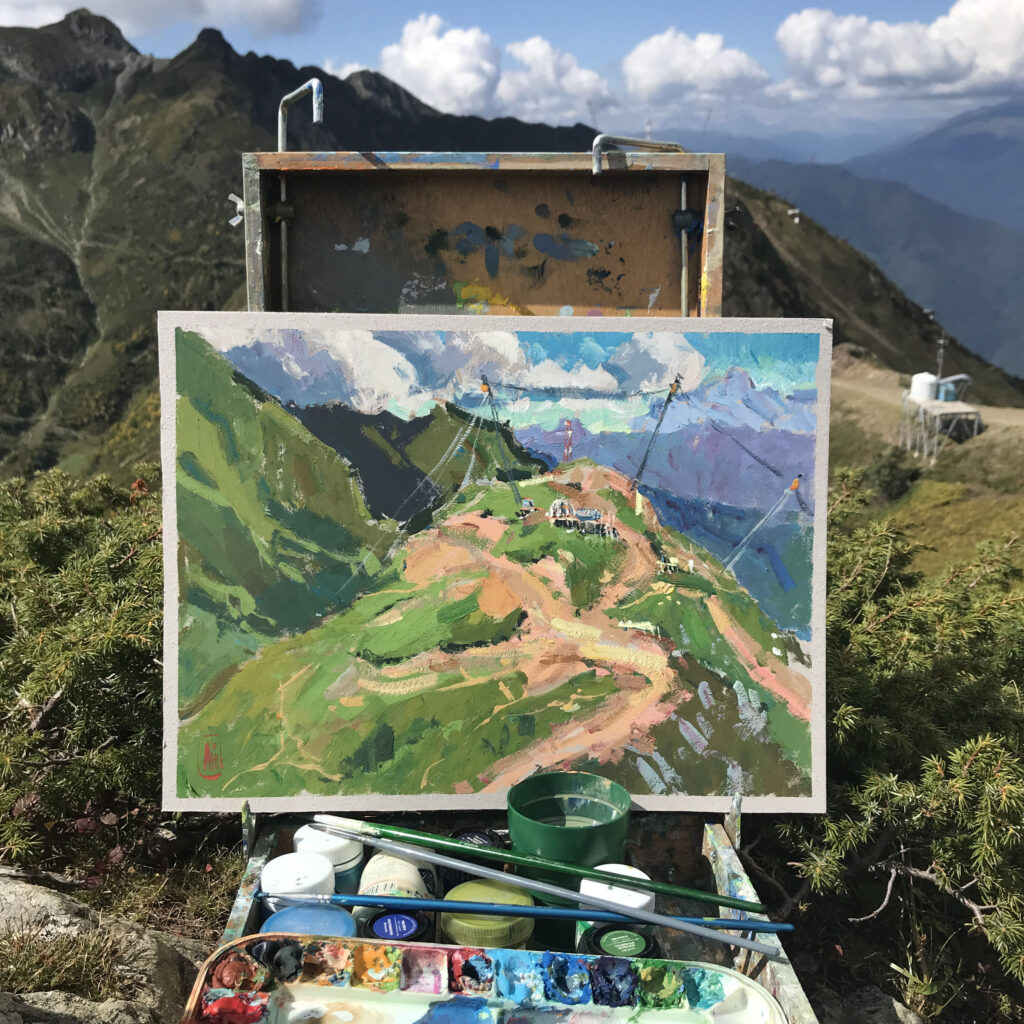
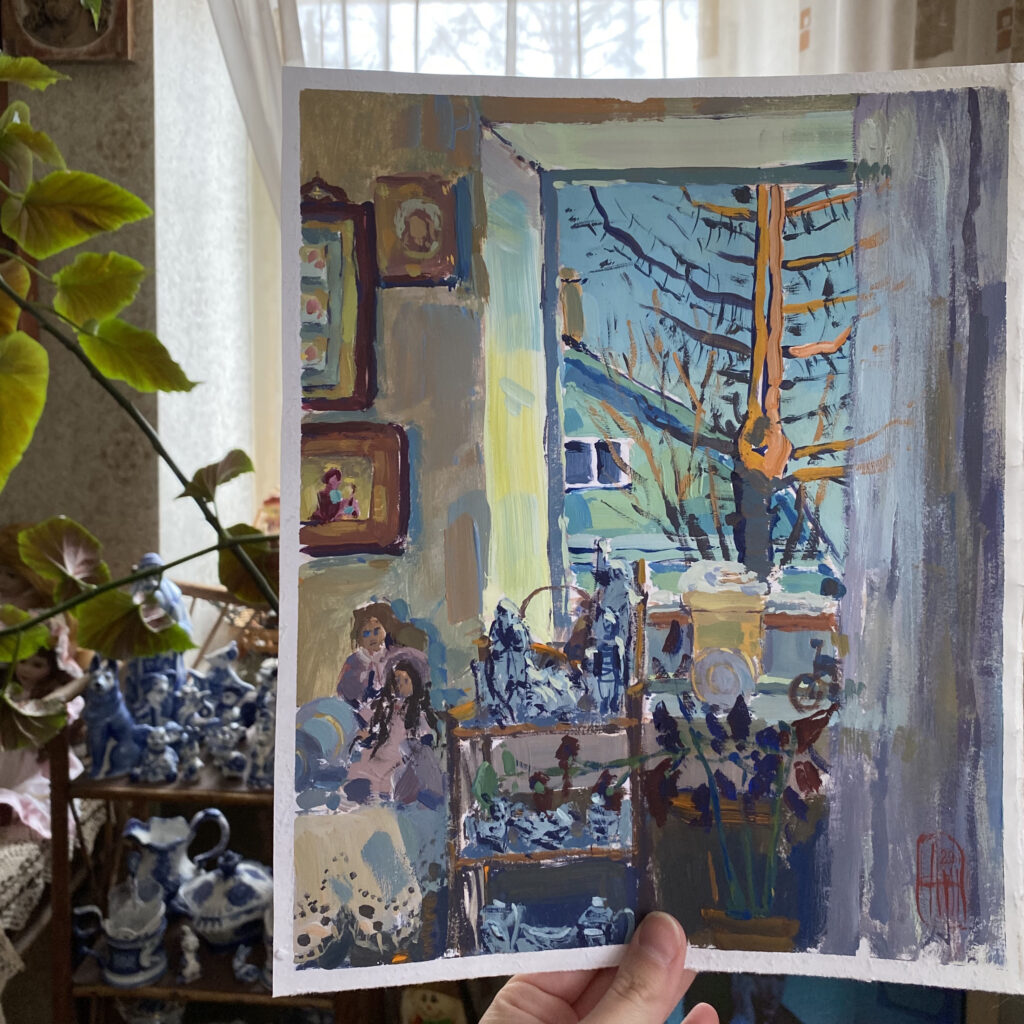
What inspires and motivates you?
The Life in all its forms does. The people around motivate me not to give up and show that everything is possible if you want that much and what is more important you should make efforts to achieve it. Travelling restarts us and gives loads of impressions and energy. The Nature with all its variability is one strong inspiration.
In your open-air works, your style can be easily read, it seems that you paint fast and light. It that so?
Exactly it is since I have some problems with long term works. It is much easier to me to do everything at once than to leave some part of it for later. And it is not always good. Sometimes you should slow down and realize what you did wrong on the first stage of the work, then at the end to see that everything is not that proper and to restart from the very beginning. That is why I do not like small forms in the open air. Generally, I produce competed works where there is life and free brushstrokes describing my mood. Actually I felt this freedom graduating from the University when there no frames and borders any more and you have this power to act the way you like. You can experiment and nobody will consider it to be bad. It has occurred that you can paint bright not getting into academicism.–
How do you choose subjects and materials?


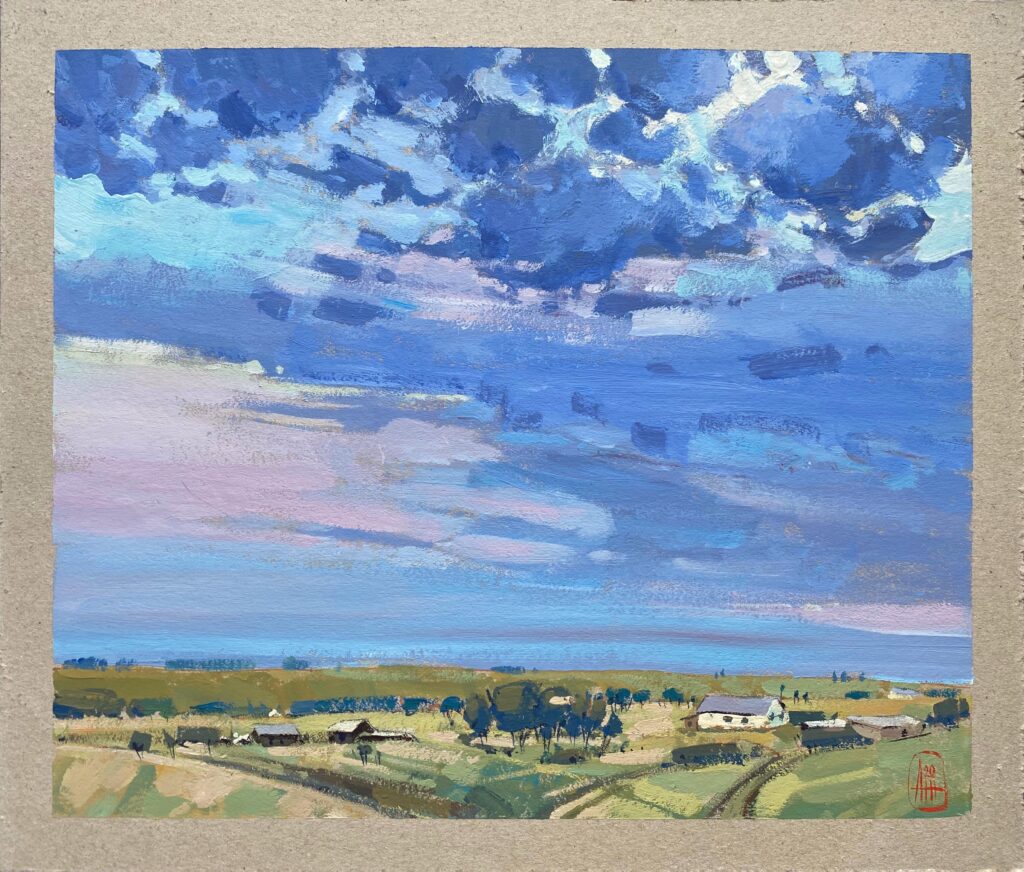
The subject is usually chosen at the place of painting or beforehand if previously there was no time for this or there was no sketchbook on me. At the place, my attention can be mostly attracted by some certain detail, for example, the sky, or a bow of the river, it can be a twig growing pretty, or the colours looking beautifully.
As for materials I usually choose them according to the season because it is hard to use water gouache or tempera when it is frosty or damp. During my trips it is easier for me to work with quick-drying materials, as you do not have to trouble yourself about transporting the pictures. But there are some disadvantages in them. In the heat not only pictures are drying fast but the paints on the palette. Gouache can easily dry out into a stone if not sprung with water constantly. Oil paints are more weather-resistant.
If you were not involved in the painting art, what would you do seriously and permanently?
When I had been a child and a teenager, I had thought that I would become a vet, but later I understood that I would not be able to perform any manipulations on animals. Once I wanted to become an archaeologist, after having read all these myths and legends and having watching all these adventure films on this subject. I am still lightly interested in these themes. I like the history of arts, but I cannot see myself being a historian or working at the museum. All these are interesting but only art has real importance and constant attraction for me. That is why I cannot answer this question. I think that I am exactly at the place I destined to be at. If it were not painting, there would be some other interests and it means that it would be another person.

